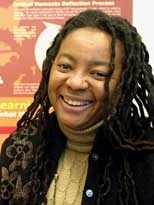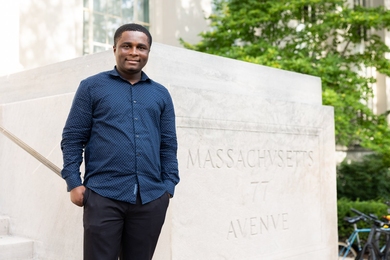Sometimes, a door is more than just a door.
When Lee Farrow was a community organizer in New York City, she worked with formerly homeless people whose city-owned housing wasn't much better than living outdoors. Their windows were broken, their walls were cracked, their ceilings leaked. And the building's front door was missing.
Farrow, a 2006-07 Mel King Fellow with the Center for Reflective Community Practice (CRCP) at MIT, helped the tenants navigate the municipal bureaucracy. They called, wrote, cajoled and complained until the door was replaced.
Farrow said the process was about more than a door. "A building entrance door is the gateway for societal ills coming into your dwelling. People mobilized around that. New York City can be a very isolating place when you are living in marginalized conditions with very little hope of those conditions changing. To witness and be a part of an effort to get a door changed generates so much aspiration among people after realizing they were able to do that. It was about empowering people with the resources and knowledge to achieve change."
Many of the residents went on to change other aspects of their lives. Farrow moved on, knocking on doors building by building, block by block. For 32 years, Farrow, who grew up in North Carolina, worked in some of New York's most devastated neighborhoods, engaging with neighborhood leaders and other community-change agents to bring about transformation in the neighborhoods and their residents. She spent her last 11 years in New York developing and implementing the Community Pride Program at the Harlem Children's Zone.
While working with Ceasar L. McDowell, MIT professor of the practice of community development in the Department of Urban Studies and Planning, and Dayna Cunningham, executive director of CRCP, Farrow is reflecting on, chronicling and analyzing her work to pinpoint lessons to share with the MIT community and the community-building field. Farrow also is completing a Boston neighborhood-learning project as a model for how communities learn together from their work. The Mel King Community Practitioner Fellowship provides a yearlong opportunity for extraordinary community practitioners to reflect on and document key areas of their practice.
One of the outcomes of Farrow's work is the Community Innovation Spring Symposium, a seminar series that aims to share and build knowledge from academics, local practitioners, policy-makers and philanthropists. The series will take place May 4-5.
"As a veteran organizer, I've done a lot of work in the course of my career to help people improve their lives and their living conditions," she said. "Over time, you get really tired, but you realize there is something about the core of this work and the human spirit of community that never leaves you." Her goal now is to identify what she has learned about the most effective ways of bringing people together and helping change their conditions. Most important, she wants to help people identify the knowledge they've gained from their work to help solve community problems.
Farrow saw that the process of taking ownership of their living conditions mimicked the changes in their personal lives. "People had been feeling defeated. Organizing with their peer tenants and going through the process of change to improve their living conditions gave them the ability to see they have an impact and a voice. Coming together around common conditions motivated them to do more about their own personal development," she said.
Tenant organizations have led to formerly homeless people raising the capital to buy and manage their buildings from the city as low-income co-ops. It also has led to people becoming involved in other civic activities such as establishing block associations, engaging in both school board and community planning board meetings and other public activities that support neighborhood stabilization.
Living in Boston since 2004, Farrow goes back to New York occasionally. "To meet with the folks I worked with years ago and to witness the new feelings about their neighborhoods--it is quite amazing to see and witness how the human spirit can be moved from a place of hopelessness and helplessness to a place of accomplishment." All starting, she said, with a group of hopeless people trying to get their building a door.
A version of this article appeared in MIT Tech Talk on April 25, 2007 (download PDF).






